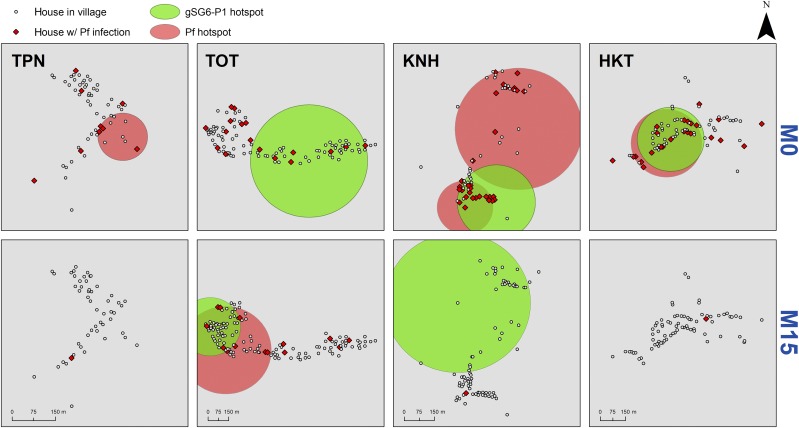Figure 2.
Micogeographical clusters of Pf malaria infections and vector exposure in the study villages at baseline (M0) and then after the implementation of the mass drug adminsitration (MDA) pilot trial (M15). The large red (Plasmodium falciparum infections as measured by either ultrasensitive qPCR or rapid diagnostic test) and green (very high responder to gSG6-P1) circles are the statistically significant hotspots detected by spatial scan statistics (P < 0.001). Pf infections are shown in red diamonds. Before MDA (M0), three villages Tar Au Ta, Ka Nu Hta, and Htee Kaw Taw (TOT, KNH, and HKT) had multiple clusters of gSG6-P1 responders (Relative Risk [RR] = 16.15, 9.29, 8.83, and, P < 0.0001, respectively) that partially overlapped with clusters of P. falciparum infections at KNH (RR = 30.20, P < 0.0001) and HKT (RR = 19.46, P < 0.0001). After MDA (M15 conducted at the end of the rainy season), P. falciparum infections almost disappeared in all villages except at TOT where a cluster of P. falciparum infections was detected in the western part of the village (RR = 77.23, P < 0.0001) that mostly overlapped with the cluster of gSG6-P1 (RR = 5.86, P < 0.0001).

